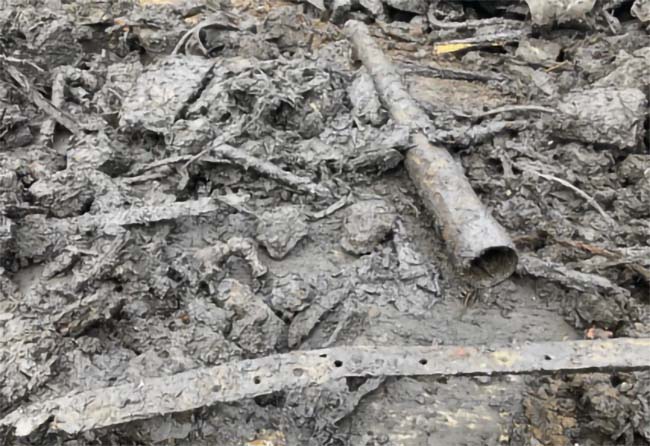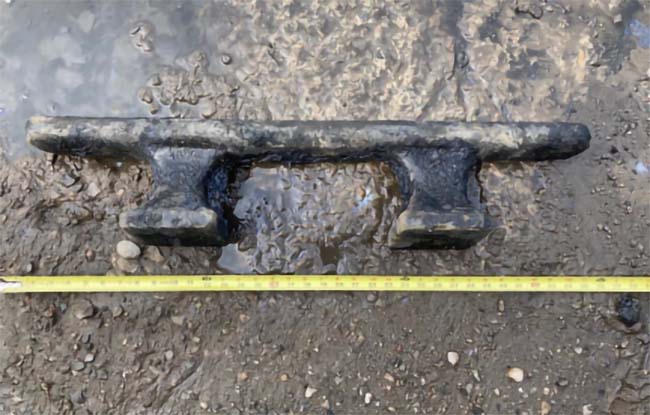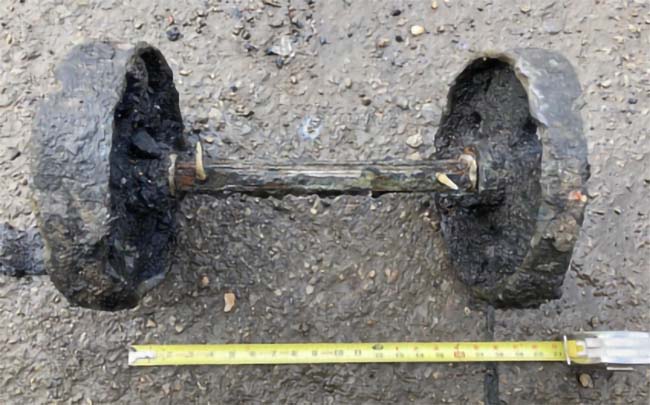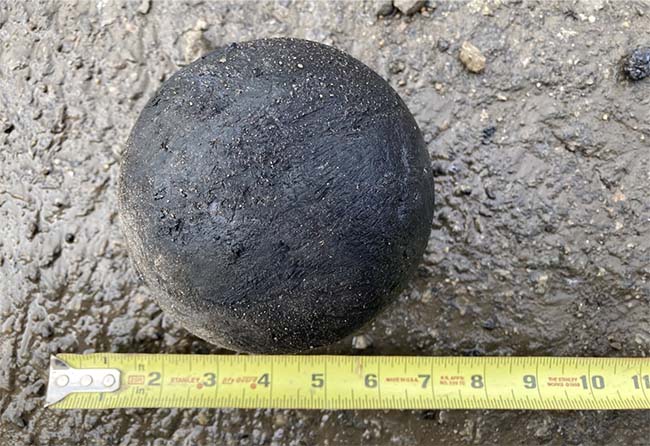INTRODUCTION
Dredged material is processed according to the Level 1 Archaeological Monitoring protocol outlined in the draft Cultural Resource Monitoring Plan (revised September 2020). This protocol calls for dredged soft sediments to be placed directly into barges, floated to the processing facility, and screened over bars on a vibrating platform. Items removed during the vibratory screening process are then sorted by trained personnel as per the draft Cultural Resource Monitoring Plan. Items of potential interest (possible artifacts or objects of local interest) are placed in a separate stockpile and photographed for archaeologists to review. These items are then placed in a holding area for archaeologists to inspect. To date, the vast majority of the recovered items consisted of modern debris and timbers.
RESULTS
An archaeologist conducted a scheduled site visit on 4/9/21 to review the recovered items in person with the assistance of a dredge material processing facility machine and operator to sort through stockpiled items. Photographs were taken of stockpiled items.
The recovered items were spread by machine on a flat hard surface to allow for the archaeologist to clearly review them (Photograph 1). Any item of potential interest was separated, rinsed and assessed. The reviewed material consisted of two piles of unsorted and muddy debris comprised of concrete fragments, rocks, large and small pieces of wood and timber (Photograph 2 and 3), miscellaneous metal (Photograph 4), tires and car parts. Two items were recovered at the canal site and were delivered, cleaned and put to the side at the dredge material processing facility prior to the site visit. The first item was a partial non-active, inert military projectile (Photograph 5). The second item was a large metal safe (Photograph 6). In addition, three items were recovered during the material review and retained: an iron cleat used to tie off a boat to a dock with a rope (Photograph 7), a set of metal cart wheels connected by a wooden axle (Photograph 8) and a small wooden ball (Photograph 9).









ITEMS SEPARATED FOR FURTHER REVIEW
The archaeologist retained five items for further analysis: a partial non-active, inert military projectile shell, a metal safe, an iron dock cleat, a set of metal cart wheels and a small wooden ball. The wooden ball should be placed in water.
CONCLUSIONS AND RECOMMENDATIONS
The archaeologist concludes that the five items observed during the sediment screening at the dredge material processing facility retain possible historic/archaeological significance. Per the draft Cultural Resource Monitoring Plan, the archaeologist further recommends that all the non-historically/archaeologically significant debris at the dredge material processing facility has been reviewed by the archaeologist as of 4/9/2021 may be disposed of.

No dredging activities were conducted March 22 or March 23, 2021.
